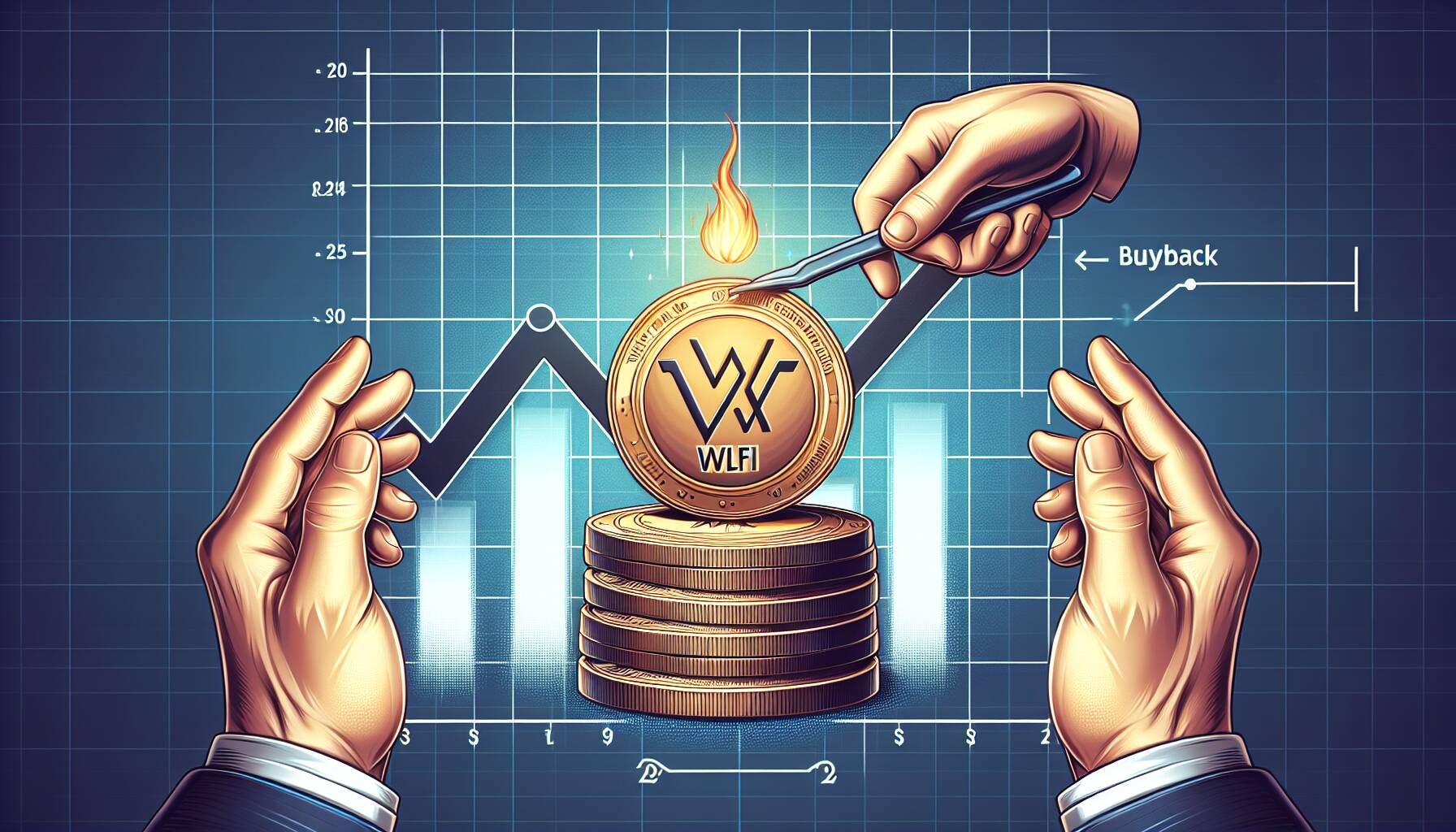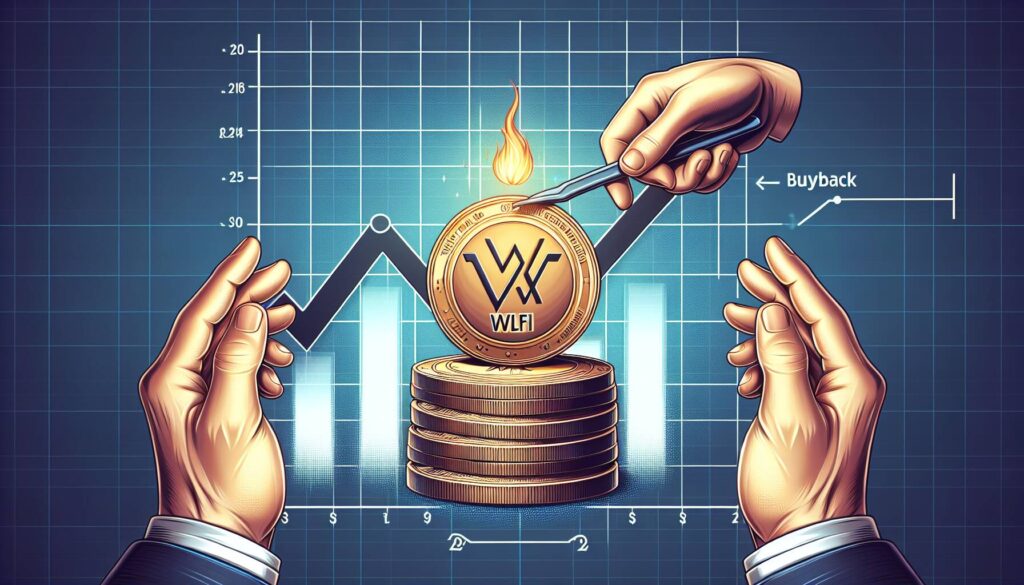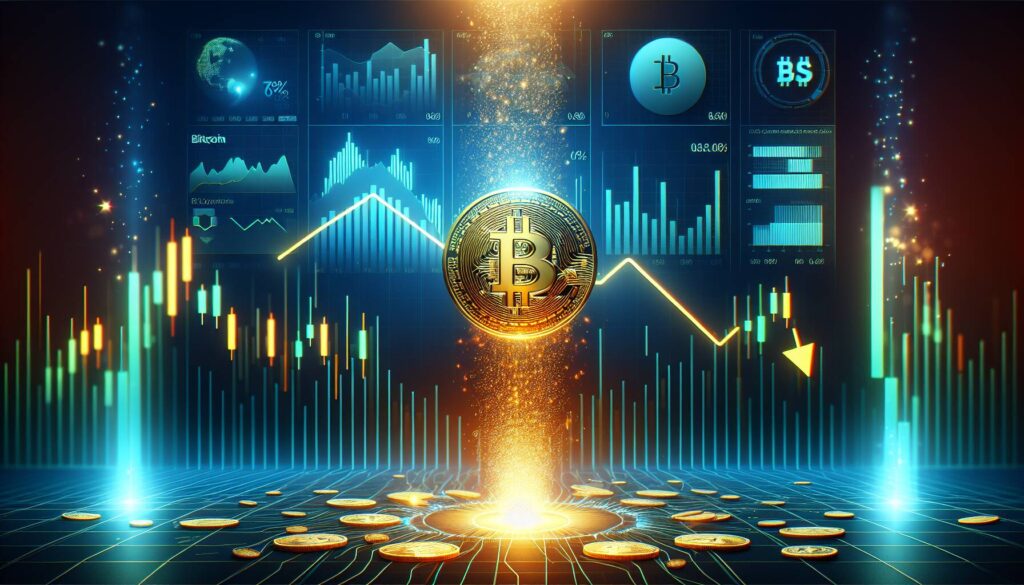World Liberty Financial’s native token, WLFI, is currently maintaining a steady performance in the cryptocurrency market, following a significant decision by its community. In an overwhelming vote, community members approved a proposal to channel all protocol-owned liquidity fees into a buyback-and-burn initiative. As of now, WLFI is trading at approximately $0.20, reflecting a modest increase of 0.2% over the last 24 hours and a notable 7.8% rise for the week, according to data from CoinGecko.
Despite its recent gains, WLFI has experienced a 35% drop since its launch, with a robust market capitalization of $5.4 billion and impressive daily trading volumes nearing $480 million. The newly approved buyback-and-burn plan will allocate 100% of fees from WLFI’s liquidity pools across multiple platforms, including Ethereum, Binance Smart Chain, and Solana, for purchasing WLFI tokens that will be permanently removed from circulation. This strategy aims to reduce the token’s available supply and foster a narrative of scarcity that many proponents believe will strengthen its long-term value.
The vote showcased remarkable community engagement, with over 1.3 billion votes cast in favor, representing 99.48% support compared to a mere 0.12% opposing. Turnout exceeded expectations, reaching 135% of the required quorum, further emphasizing the community’s strong backing for this initiative. Supporters argue that linking token burns to trading activity will create a synergy between how the token is utilized and its long-term worth, steering attention from previous volatility towards a more sustainable, deflationary approach.

World Liberty Financial Token (WLFI) Update
Key points regarding WLFI’s recent developments:
- Community Approval: The community overwhelmingly voted in favor of directing all protocol-owned liquidity fees towards a buyback-and-burn mechanism.
- Current Trading Status: WLFI is trading near $0.20, showing a slight increase of 0.2% in the last 24 hours and up 7.8% over the past week.
- Market Cap and Trading Volume: The token boasts a market capitalization of $5.4 billion and reports daily trading volumes around $480 million.
- Post-Launch Performance: Since its launch, WLFI has experienced a decline of approximately 35%.
- Buyback-and-Burn Mechanism: The proposal allocates 100% of fees from liquidity positions on various chains (Ethereum, Binance Smart Chain, Solana) for WLFI purchases to be burned, aiming to reduce circulation.
- Voting Consensus: The voting for the proposal showed a strong consensus, with 99.48% in favor—totaling over 1.3 billion votes, surpassing the required quorum.
- Strategic Shift: The buyback-and-burn initiative aims to refocus investor attention from initial volatility to a long-term scarcity model, similar to what Ethereum adopted.
This update on WLFI may impact readers by indicating potential future value in the token as it shifts towards a deflationary model, advocating for long-term investment strategies.
Comparative Analysis of WLFI’s Buyback-and-Burn Strategy
The recent developments surrounding World Liberty Financial’s native token (WLFI) highlight a strategic move that diverges from traditional models seen in the cryptocurrency landscape. By allocating all protocol-owned liquidity fees toward a buyback-and-burn mechanism, WLFI aims to enhance its deflationary narrative and create a closer relationship between token usage and long-term value. This contrasts with other tokens that have faced challenges due to high inflation rates and excess supply, which can dilute investor confidence and market value.
Competitive Advantages: WLFI’s strategy significantly positions it in a more favorable light compared to other crypto projects, particularly for those seeking sustainable growth. The alignment of trading activities with a diminishing circulating supply can appeal to long-term investors who value scarcity. Additionally, the community’s overwhelming support for the buyback-and-burn initiative—evidenced by a 99.48% approval rate—demonstrates strong investor confidence and unity, potentially attracting more capital as positive sentiment builds around the token.
Competitive Disadvantages: However, the reality remains that WLFI is still down 35% since its launch, which could deter new investors wary of volatile assets. While the buyback-and-burn strategy aims to rectify this by fostering a deflationary model, there is inherent risk in execution. If market conditions worsen or if the adoption doesn’t translate into increased use or demand, the efforts might not yield the desired effect and could lead to further disillusionment among stakeholders.
This news could particularly benefit investors looking for tokens that promise long-term scarcity and growth potential, especially those familiar with similar models employed by Ethereum. Conversely, it may present challenges for investors or traders more inclined toward short-term gains, as initial volatility and past performance could deter their interest. Overall, the strategic focus on reducing supply through community-driven mechanisms could strengthen investor loyalty but necessitates vigilant execution amidst fluctuating market dynamics.

















